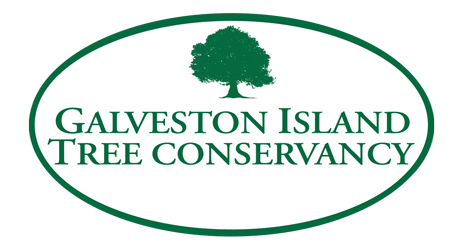Great Crapes
Tree Stories: Galveston’s Great Crapes
We love crapemyrtles in Galveston (Lagerstroemia species). Why do we love them?
These trees are definitely eye candy. A long bloom period, beginning now, produces clusters of crinkled flowers with a crepe-like texture appearing on the tips of new branches summer through fall. The “lilac of the south” is showy with its remarkable array of hues.
In fall leaves give color before they drop, often showing yellow, oranges and reds. Bare branches in winter are graceful and sculptural with smooth trunks of brown or gray. A bare crape in winter can be a beautiful sight.
Crapes are among our more low maintenance trees. They do well in our summer sun and heat and are drought resistant once well-established. These trees can thrive in almost any soil, and established plants need only minimal fertilization. Crapes require little pruning other than occasionally thinning lower branches and suckers that emerge at the plant’s base.
Crapesmyrtles are disease resistant. The only common pests are powdery mildew and aphids. The powdery mildew fungus can be prevented with proper tree selection, placement, and care, and treated with horticultural oil or fungicide. Aphids are insects that excrete a sugary “honeydew” which promotes black sooty mold growth. A blast of water from the garden hose can dislodge aphids, or if needed you can spray with insecticidal soap.
These long-lived fast growers come in a size for any location. Roots seldom disturb foundations or sidewalks. Neighborwoods plantings have included crapemyrtles as a small tree choice for right-of-way areas under power lines.
Unfortunately, some crapes in winter are a painful sight to behold, with knobby, shortened trunks that sport a forest of thin stems. This is the result of “crape murder”--a technique denounced by professional arborists--of topping major branches to create an array of thin, whip-like shoots at the end of each stump. These whips are too weak to hold up the flowers, so the branches droop and often bend to the ground. Professionals discourage this practice that impacts crapemyrtle health and structural integrity, weakening branches, actually reducing blooming, and perhaps increasing the tree’s susceptibility to pests and disease. The result is a tree that looks like a pompom during bloom season, but shows its deformity in winter when it should show off its sculptural beauty.
So how can we reduce this crape murder and encourage residents to allow crapes to grow into graceful natural forms? The Tree Conservancy wants to acknowledge residents for treating their crapes right.
Where are the most beautiful crapes on the Island? The Conservancy is seeking crapes that have not been “murdered”, and maintained to achieve a natural form. Most often this is a tree with one or several larger trunks and a rounded leaf and bloom canopy, with no “knobs” caused by crape murder. We ask you to nominate your favorite Island crape. Send a photo and its address to treesforgalveston@gmail.com by July 15. Don’t wait, there will be prizes for the keeper of our most beautiful crape!
Hurricane Ike caused the loss of 40,000 trees on Galveston Island. The Galveston Island Tree Conservancy was formed to address that loss and to date has replaced almost 20,000 through grant-funded plantings and giveaways, with more planned. “Tree Stories” is an ongoing series of articles intended to bring attention to outstanding Island trees and tree care. If you have or know of a special tree on Galveston Island that should be highlighted, please email treesforgalveston@yahoo.com.
Margaret Canavan is a Galveston resident, a Certified Master Gardener, and a member of the Board of the Galveston Island Tree Conservancy.

